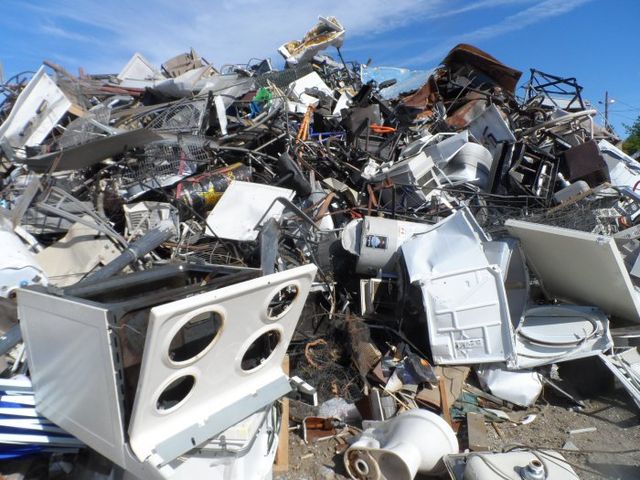10 Beginner-Friendly Tips for Setting up a Salt Reef Tank
There’s a reason why the ornamental fish market is expected to be worth a staggering $3.67 billion by the year 2033. Fish are great pets because they’re both fun to watch and tanks can make for some great interior decorating.
However, when looking into new fish, most people will simply choose freshwater options because they’re easier. Setting up a salt reef tank can indeed be a little more involved.
That doesn’t mean you shouldn’t consider it as a beginner. In this guide, we’ll be going over some basic tips for ensuring that your new saltwater fish are happy and healthy in their new tank environment.
1. Start Small
It can be tempting to dive right in and get the biggest setup you can imagine. However, even small levels of salt reef tank fish care require a lot of equipment, supplies, and maintenance.
As such, we recommend starting relatively small. That way, you aren’t overwhelmed with costs and you can decide whether or not you like this type of tank. However, keep in mind that small for a salt reef tank is still relatively large.
2. Choose Good Beginner Fish
If you’re a beginner you’re going to want to choose some easy fish for your first tank. Easy fish to take care of generally don’t require a ton of maintenance.
They also aren’t aggressive to other fish and they’re resilient as you’re getting used to your set-up.
Some good fish selection options include clownfish, yellow tangs, longnose hawkfish, and butterfly fish. You also can’t go wrong with these gobies for sale.
3. Get a Big Tank
We mentioned that you should start small, but it’s important to remember that even small salt reef tank set-ups are still pretty large. Your fish need lots of room to establish territory and roam around.
What’s more, more water in the tank means greater temperature stability which is a must when it comes to saltwater fish.
We recommend getting a tank that can hold between forty to ninety gallons. An all-in-one tank can be a good option for beginners.
4. Maintain Proper Water Chemistry
If you want your fish to survive you need to make sure to regularly check the water chemistry in their fish tank ecosystem, specifically the pH levels. The pH level for any salt reef tank should hang around 8.1 to 8.4.
Make sure you also keep an eye on the nitrate, nitrite, and ammonia. For these keep that as close as you can to ten ppm.
The best way to check your water chemistry is by investing in test kits. Make sure to also invest in temperature control, additives, and supplements to help them thrive.
5. Establish a Maintenance Schedule
Salt reef tanks do require a bit of maintenance now and then to ensure the organisms have a safe and clean environment. In addition to regularly cleaning the tank, you’ll also want to change the water and replace filters.
You should be deep cleaning your tank every few months. However, some light cleaning every few days or weeks can help you avoid some of these.
Make sure you’re changing around 30% of the water every month. Not only will this help with the health of your fish, but it will also make the tank more attractive.
6. Be Careful Around Coral
There are a lot of reasons you should consider investing in coral and other living rocks. Besides the fact that they’re attractive, they can also establish a symbiotic relationship with your fish.
However, they do require a bit of extra care. If you’re not diligent with your cleaning, algae growth and bleaching can kill your coral. That’s why it’s important to pay close attention to them.
If coral is thriving, it will be bright-colored and growing. The first sign you notice something is off take corrective measures to protect it.
7. Pay Attention to Lighting and Feeding
Different types of coral and invertebrates will require different types of lighting set-up. Typically, this involves a combination of full-spectrum and actinic lights.
In addition to fish food, you’ll also want to invest in phytoplankton and zooplankton for your coral.
Just remember that there is no one-size-fits-all method to lighting and feeding your fish. So make sure you research to find the specific types that your set-up needs to thrive.
8. Have Some Back-Up Options
You never know when you might encounter the unknown. In some cases, this might be a power outage that causes your heater, pumps, and filters to shut down.
In these cases, having a backup battery-powered option can be a lifesaver. Other times, you might notice a fish or coral coming down with a disease.
In this situation, the best option is to quarantine them in a separate tank to ensure they don’t spread the disease.
9. Invest in Automation
Some aspects of a salt reef tank will require you to be hands-on. However, other parts can be automated. For example, fish benefit from clear day and night.
So you can invest in an automatic light timer so you don’t need to remember every day. Similarly, you can get reminders that let you know when the water chemistry is off.
10. Join a Fish Community
Part of the beauty of owning a salt reef tank is the sense of community that comes with it. Whether you’re visiting your local fish shop, or posting on online forums, don’t be afraid to connect with fellow fish lovers.
Not only is it a great way to share your passion, but you can also get valuable personalized advice from people who have been doing it for years.
Appreciate Learning How to Set Up a Salt Reef Tank? Keep Exploring
We hope this guide helped you learn more about setting up a salt reef tank. If you’re feeling overwhelmed by all the information, we don’t blame you. That’s why you can’t be afraid to reach out for help.
Whether that’s to your local fish shop or YouTube is up to you. Just make sure you get an expert’s second opinion before you proceed.
Want more pet advice? We have lots of similar content on our website, which you can find if you keep reading now.

Greetings! I’m thrilled to introduce myself as a dedicated blogger with a fervent passion for crafting meticulously researched and insightful blogs. My mission is to provide you, the readers, with a treasure trove of valuable information. Join me in this exciting adventure of discovery – Thanks







